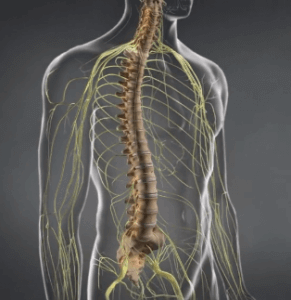Types of Spinal Stenosis
Cervical Spinal Stenosis
Cervical spinal stenosis is a degenerative condition of the upper region of the spine or neck. Cervical or neck spinal stenosis occurs in the upper region of the spine, leading to a wide range of painful and dangerous symptoms for those who suffer from this condition. The condition is characterized by a narrowing of the spinal canal in the cervical region often caused by an impingement such as a bone spur, herniated disc, or a bulging disc. Cervical spinal stenosis is a degenerative condition that often occurs with age and is sometimes a side effect of osteoarthritis. Due to the compression of the spinal cord, cervical spinal stenosis can often lead to chronic neck pain and other debilitating symptoms.
The Bonati Spine Institute has a 30-year record of developing and performing innovative patented procedures to treat cervical spinal stenosis.
Lumbar Spinal Stenosis
When the spinal canal or vertebral foramina narrows due to disease, typically degenerative arthritis or degenerative disc disease, a condition called lumbar spinal stenosis is usually diagnosed and subjected to applicable treatment methods. Spinal osteoarthritis destroys cartilage between vertebrae, promotes bone spur formation (osteophytes) and excessive growth of ligamentous structures.
Lumbar spinal stenosis may also result from spondylolisthesis, or slippage of vertebrae against other vertebrae. As the vertebral foramina narrows and spinal cord nerves suffer pressure from being compressed and restricted, lumbar spinal stenosis symptoms emerge and gradually worsen unless spine surgery, is performed to remove pressure on nerves.

In addition to arthritis and spondylolisthesis, lumbar spinal stenosis, sometimes called spinal stenosis lumbar, may also be caused by tumors, infection or metabolic bone disorders associated with overgrowth of bone. Lumbar spinal stenosis is caused by the compression of nerve roots in the lower back and often manifests in symptoms such as tingling, numbness or pain that radiates from the lower back and down to the buttocks or legs.
Delaying treatment for lumbar spinal stenosis will result in worsening symptoms and possible urinary incontinence or loss of normal bowel functioning. Although traditional treatments may reduce pain temporarily, lumbar spinal stenosis surgery is typically recommended to more permanently eliminate spinal stenosis symptoms.
Thoracic Spinal Stenosis
Thoracic spinal stenosis occurs in the middle portion of the spine caused by a narrowing of the spinal canal in the thoracic region of the back, often limiting a patient’s ability to move laterally or rotate.
Are You A Candidate For Lumbar Spinal Stenosis Surgery
Spine surgery for lumbar spinal stenosis is referred to as a laminectomy or a foraminotomy. Candidates for either spinal stenosis treatment have been clinically diagnosed with lumbar spinal stenosis and have exhausted other treatment methods such as physical therapy, pain medications and pain management programs.
The Bonati laminectomy procedure involves removal of lamina, bony extensions, from behind vertebral bodies to relieve pressure on nerve roots. Alternately, the Bonati foraminotomy procedure enlarges the area where the nerve roots leave the spinal canal so that nerves are no longer irritated by abnormal compression. A foraminontomy can be performed alone or in combination with a laminectomy.
Advantages of the proprietary Bonati Spine Procedures include fewer risks, smaller surgical incision, and no hospital stay necessary with rapid recovery. The Bonati advantages also include the experience as the world leader in advanced spine surgery as the first orthopedic ambulatory surgical center in the United States, first to receive FDA approved laser spine surgery procedures, 7 US patents for instrumentation and procedures and holds an over 98.75% patient satisfaction success rate with over 75,000 successful procedures. Contact us today to learn more or request a free relief package. At the Bonati Spine Institute, patients receive a free MRI review to ensure proper diagnosis and treatment plans.
The Bonati Spine Institute encourages patients with spinal stenosis to contact us to request a no-obligation MRI review or discuss your conditions with our medical professionals. Find out why The Bonati Spine Procedures are considered to be among the world’s best solutions when it comes to advanced spine surgery. Your pain from spinal stenosis can become a thing of the past.
